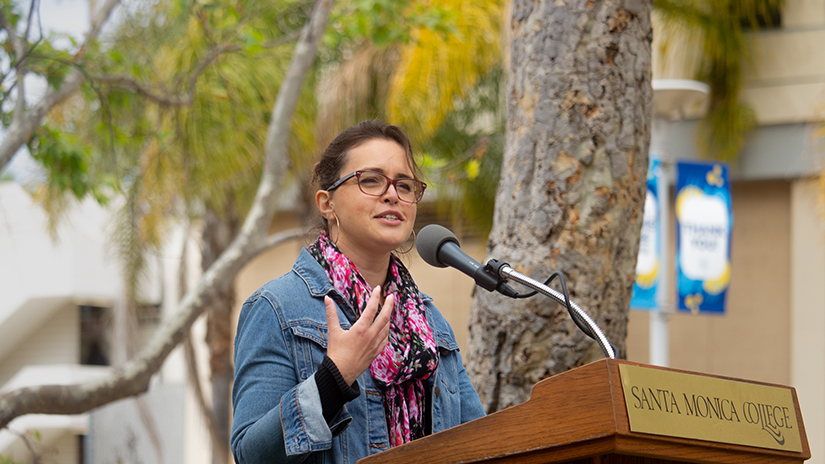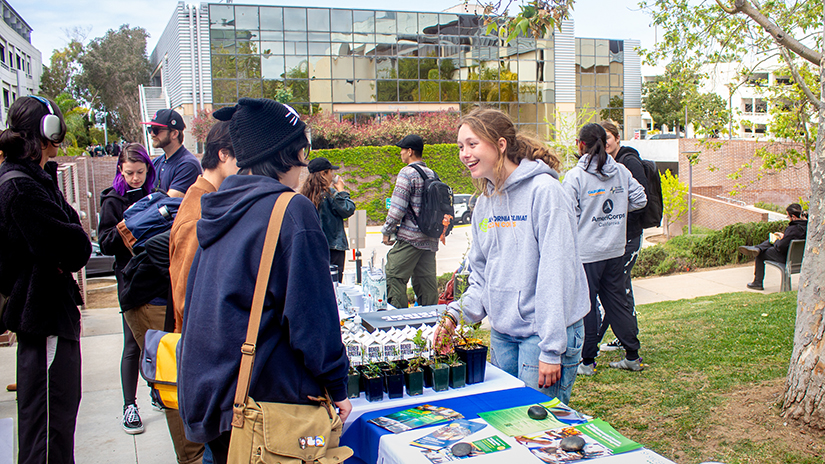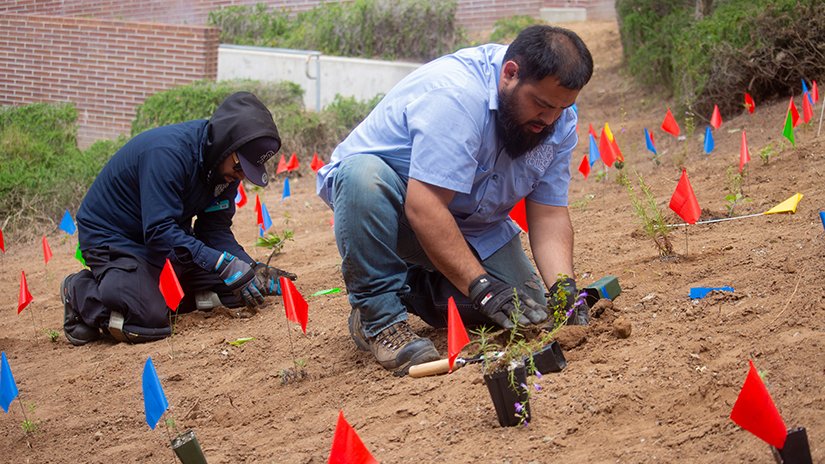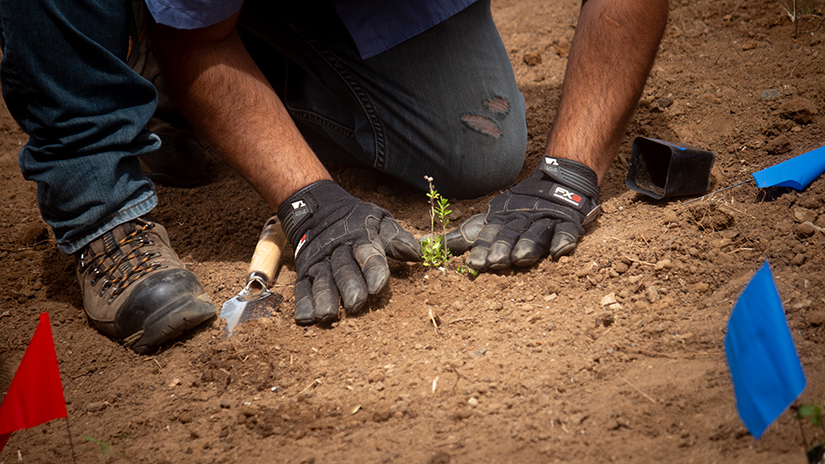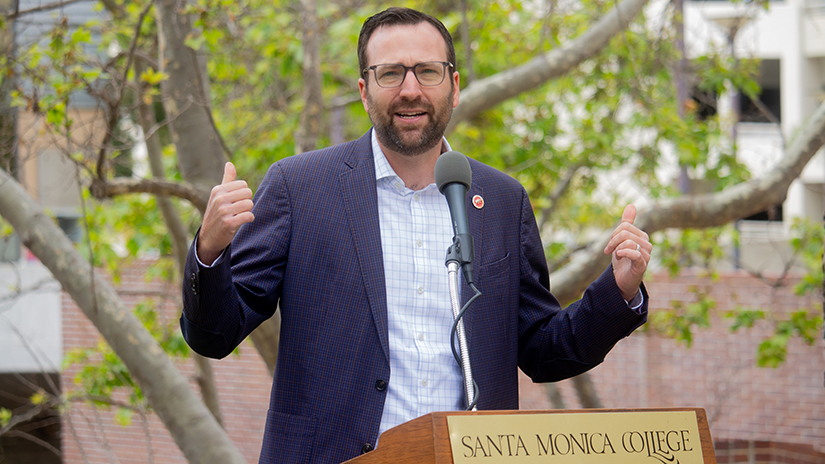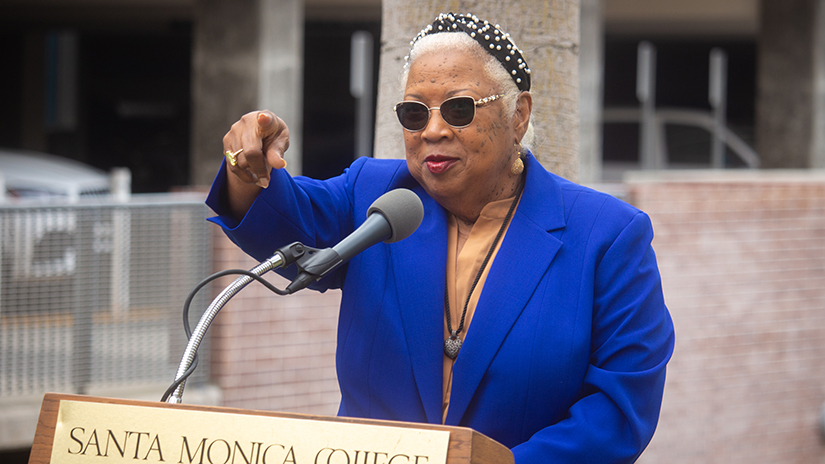April 25, 2024
Santa Monica College Plants First Microforest on a U.S. Community College Campus
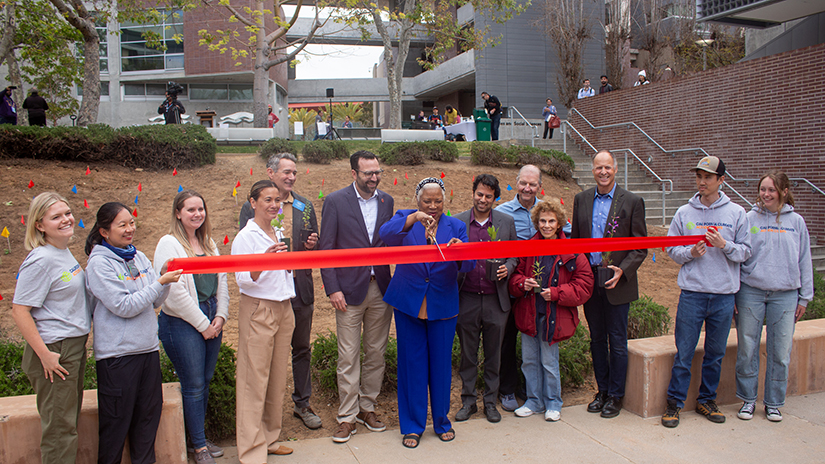
Santa Monica College Plants First Microforest on a U.S. Community College Campus
Part of Earth Week Celebrations, Collaboration Between SMC, Malibu Foundation, and City of Santa Monica Showcases Innovative Method of Planting to Restore Nature in Urban Spaces
SANTA MONICA, CA—On April 25, Santa Monica College (SMC) unveiled a microforest on its main campus at 1900 Pico Blvd. in Santa Monica during the college’s weeklong Earth Week 2024 (opens in new window) celebration. Densely-planted, multilayered indigenous forests planted in small urban spaces which act as self-sustaining ecosystems, microforests reconnect fragmented habitat and restore biodiversity. The college’s microforest will also provide research experience to biology students. Made possible by funding from Malibu Foundation (opens in new window) and part of a collaboration including The City of Santa Monica, this is the first microforest at a U.S. community college.
While the SMC microforest takes up only 300 square feet approximately, it will grow into a biodiverse habitat for the pollinating insects, birds and small animals that are so vital to the environment.
SMC Superintendent/President Dr. Kathryn E. Jeffery noted that microforests are tiny, low-maintenance preserves that mimic natural woodlands but grow nearly five times faster. “Microforests not only reduce our reliance on water, but they also effectively tuck carbon away, while providing opportunities for biodiversity to flourish—right in the heart of SMC’s main campus!” Jeffery said. “Projects like this showcase how, throughout its history, SMC has been an early adopter of sustainability measures. After all, we are in the business of education, which requires testing new methods to improve the world we are leaving for our students.”
SMC’s Director of Sustainability Ferris Kawar described the impact a microforest can have in fighting climate change and supporting biodiversity as “mighty big.” “We hope to inspire others to turn under-utilized small spaces into microforests,” he added.
Planting the First Microforest on a U.S. Community College Campus

During the event, Malibu Foundation also highlighted their Million Trees for Los Angeles County 2025 initiative which addresses extreme heat, droughts, landslides, and the severe loss of biodiversity. Attended by representatives from partner agencies, SMC students, and a representative from LA County Supervisor Lindsey Horvath’s office, the April 25 groundbreaking also featured remarks from SMC biology professors Poliana Raymer and Jessie Salter, whose students will evaluate the microforest’s plant growth, examine how microbes feed and develop its soil, and study the insects and animals it attracts.
“Students enrolled in [SMC] classes like Biology 10 – Applied Ecology and Conservation Biology – will work on projects to better understand these benefits under our scenario, which will help motivate other groups to establish microforests not only in southern Calilfornia, but also in other regions with a Mediterranean climate like ours,” Raymer said, noting that over the years, a “data repertoire” will be built up, looking at things like increase in soil microbial diversity which allows for nutrient recycling, the forest’s cooling effect, rainwater retention, and more.
This method of planting is being adopted all over the globe to restore nature in urban areas, where space is limited. Like at Santa Monica College, microforests generally feature plants native to the region, supporting the local environment rather than invading it, and they are also edible and medicinal. As the forest’s ecosystem becomes self-sustaining, its plants will need very little water. Benefits of microforests—in a small footprint—include soil-building, the capture of storm water, heat mitigation, provision of native habitats, biodiversity improvement, and more.
The full line-up of Earth Week 2024 events at the college is available at smc.edu/EarthWeek (opens in new window) . For more details on all things sustainability at Santa Monica College, visit smc.edu/sustainability (opens in new window) .
# # #


